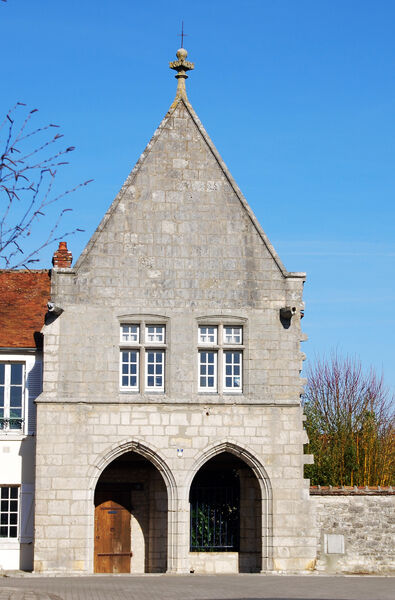The coin porch
Château-Landon
The coin porch
This beautiful civil monument in the open city served as a bureau de change, of which only the porch remains today with its 14th century gable and Renaissance-style facade windows.
Under Charles the Bald, Chateau-Landon had a monetary workshop which must have existed under the first Capetians.
However, when the County of Gatinais was attached to the royal domain of Philippe I in 1068, the workshop regained full activity with the silver deniers "Landon Castra, Nandonis Castra".
At this time of great distribution of monetary workshops in the West, money was therefore minted in Chateau-Landon in furnished and protected cellars.
Under Philippe Auguste in 1180 during the monetary unification of the kingdom, these workshops were abolished.
The commercial development of the time with the very active trade fairs generated new credit techniques.
The role of money changers has therefore become essential there, which led to the creation of this exchange house under Charles XI in the middle of the merchant district: now rue Grande.
In 1926, the Porche de la Monnaie was listed as an historic monument.
However, when the County of Gatinais was attached to the royal domain of Philippe I in 1068, the workshop regained full activity with the silver deniers "Landon Castra, Nandonis Castra".
At this time of great distribution of monetary workshops in the West, money was therefore minted in Chateau-Landon in furnished and protected cellars.
Under Philippe Auguste in 1180 during the monetary unification of the kingdom, these workshops were abolished.
The commercial development of the time with the very active trade fairs generated new credit techniques.
The role of money changers has therefore become essential there, which led to the creation of this exchange house under Charles XI in the middle of the merchant district: now rue Grande.
In 1926, the Porche de la Monnaie was listed as an historic monument.
- French
Opening times
All year round, daily.
Prices
Prices
Free access.

